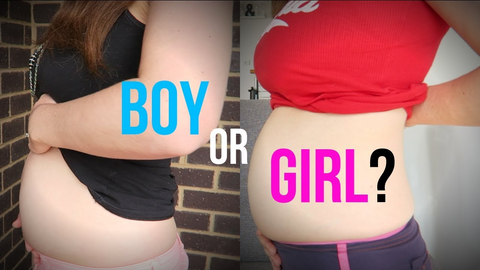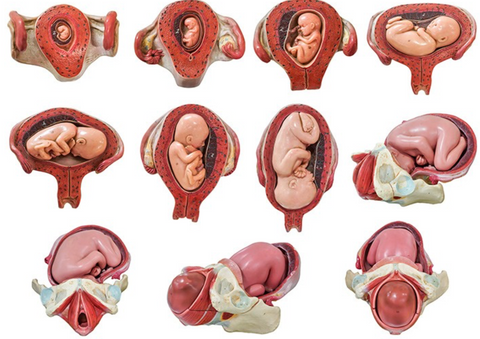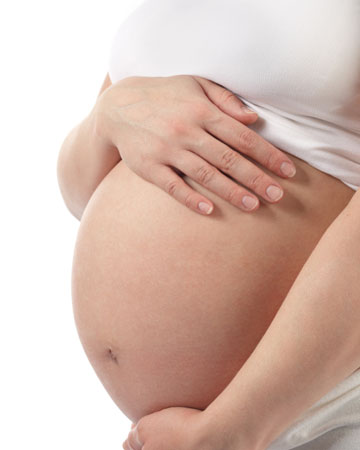Pregnancy is one of the most mysterious and beautiful chapters of a woman’s life. When expecting, most of the women are curious about their baby’s sex. No surprise as so many myths, theories and old wives’ tales surround this intriguing topic. Some even dare to conclude that it is possible to predict the baby’s gender by the shape of the mother’s bump. Let’s try to figure out where is the truth.
The Essence of the Theory
They say that if a woman has a high bump that sticks out in front, she is pregnant with a boy. If the belly is low and spread around the woman’s middle, she is supposedly carrying a girl. But is that really the truth or one more pretty lie? While this assumption sounds quite conclusive, some scientific proofs reveal almost opposite theories.

At least, two factors should be taken into account when determining the baby’s sex, namely, the size and position of the fetus in the womb. It has been found that at birth, baby boys tend to be heavier than baby girls. However, this is not always the case as weight depends on a number of factors, even such unexpected ones as mother’s prenatal health, birth weight, genetics, baby’s race (for example, Caucasian babies may be larger than African-American or Asian). In the end, a small difference in weight will not necessarily influence the shape of the belly.
The position of the baby is quite a tricky feature that makes a lot of mothers-to-be predict the baby’s sex incorrectly. If the baby’s back is located alongside the mother’s front, her belly is sticking right out. And vice versa, if the baby’s back and mother’s back are parallel, the bump looks flatter. The thing is that the baby is adopting a position without any relation to its gender. As you can see, belly shape seems to be not as helpful in determining a baby’s sex one as all the popular myths claim it to be.

Another delusive explanation of this gender prediction myth is that boys tend to be more independent which is why they are carried up lower. On the other hand, girls presumably are in need of protection, so they are carried low in the womb.
This gender prediction stereotype can also be disapproved by some factors that are related to the size and shape of the mother’s belly but have nothing to do with indicating the sex of the baby. For example, if the woman is pregnant for the first time, she may be carrying her baby higher. It can be explained by the fact that abdominal muscles are not as stretched as at the second and later pregnancies. In addition, if the woman is fit and has strong abdominal muscles, she may look like carrying a baby boy.

One more thing to take into account is that at the later stages of pregnancy, belly usually falls a bit lower (especially if this is not the first pregnancy) because the child is getting heavier and abdominal wall more stretched.
In addition, the position of the fetus in the womb may significantly change at the end of pregnancy. When the baby is moving lower into the pelvis, it may seem that the woman is pregnant with a girl as her bump looks low. Keep in mind that the baby’s position may even change from time to time influencing the shape and size of the belly.

Other Popular Myths and Theories
As mentioned above, it might be difficult to predict the baby’s gender from the size and shape of the belly. There actually are plenty of other interesting gender prediction theories out there. While most of them are not supported by science, we decided to provide a few examples that might possibly be worth your attention:
- Dangling a Ring on a String over the Belly. They say it should only by a wedding ring as if it would have any real impact on predicting the sex of a baby. It possibly is a boy if it swings back and forth. It might be a girl if it moves in a circle. The way the ring moves has actually no direct connection between the fetus located in the womb and some external object.
- Cravings. Another popular myth claims that eating a lot of salty food means that a woman will be probably having a boy. Respectively, eating sweets, fruit and dairy signifies having a girl. However, there is no scientific evidence of this gender prediction theory.
- Heart Rate. Some people believe that the speed of the baby's heart rate can help to predict its sex. If it is higher, it’s a boy. If lower, it’s a girl. However, if everything would be so simple, it would be possible to identify the baby’s sex during the first trimester. A study conducted in 2016 on around 600 pregnant women found that there is no significant difference between the baby girl’s and baby boy’s heart rates.
In case, you would like to learn more about gender prediction, visit our blog where you will find such engaging topics as Choosing a right ob or midwife for you, What is the placenta, 10 facts about teenage pregnancy you won't hear from your mom and many more.
The Most Reliable Ways of Gender Prediction
Predicting the sex of your baby may be full of fun but if you are tired of guessing, try out our gender prediction quiz. Another method may be a blood test and cell-free prenatal DNA test that are usually conducted as early as week 7 and 10 respectively. In addition to determining the sex of a baby, the DNA test may help to examine fetal cells for chromosomal abnormalities.
The most reliable way to determine the sex of a baby is probably ultrasound scanning. The baby’s sex becomes clearly seen between 14 and 20 weeks. The 20 week anatomy scan results are claimed to be 99% accurate. This ultrasound technology has been improved significantly since it was invented. With the use of the “potty shot” angle, it allows us to see the spine, fingers, face and, of course, determine the gender.

